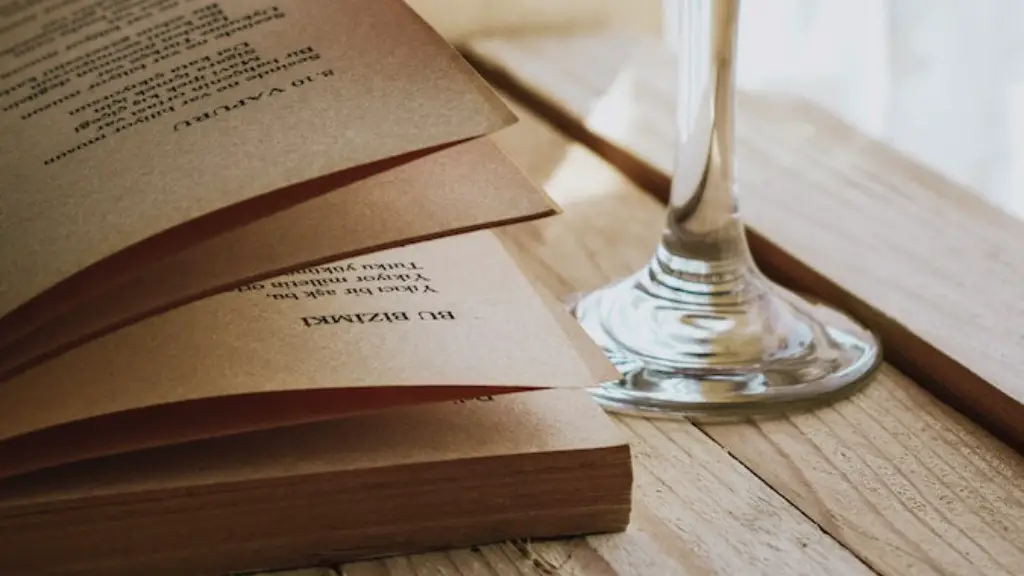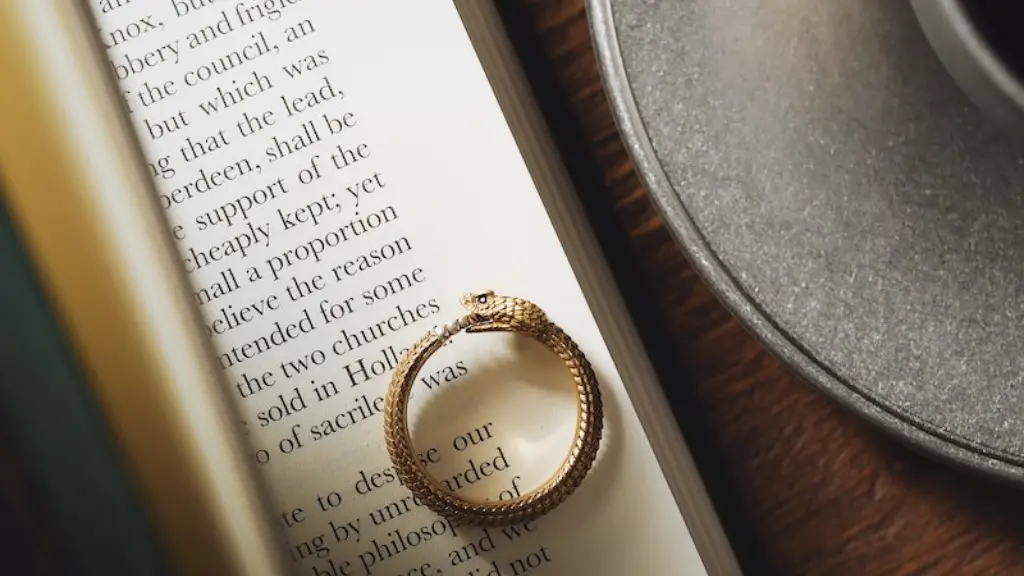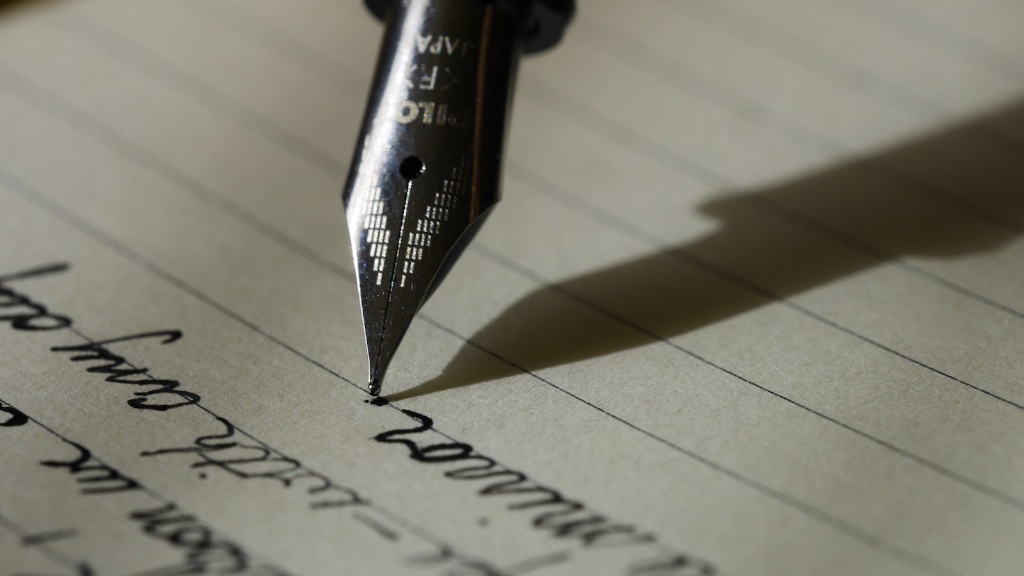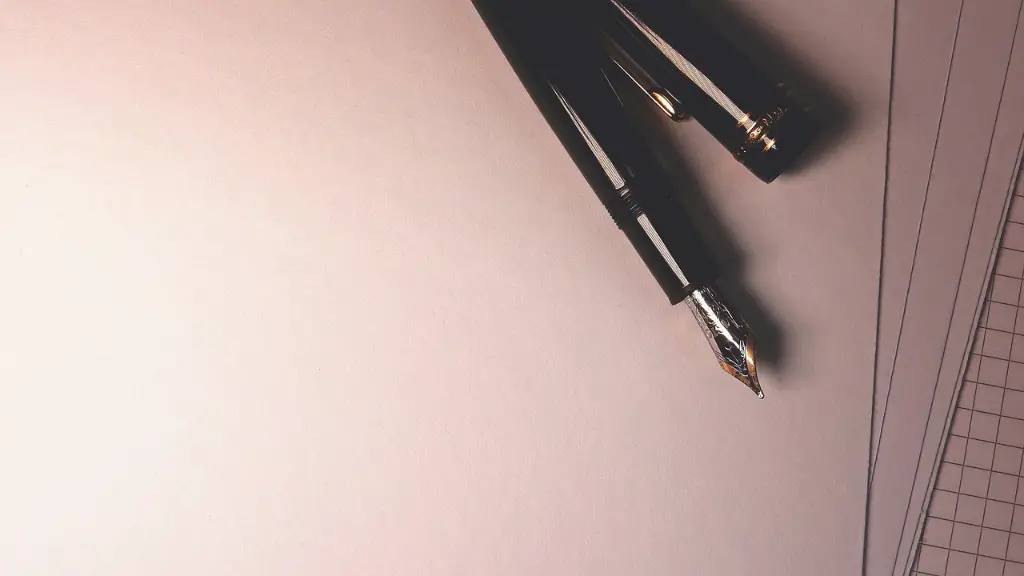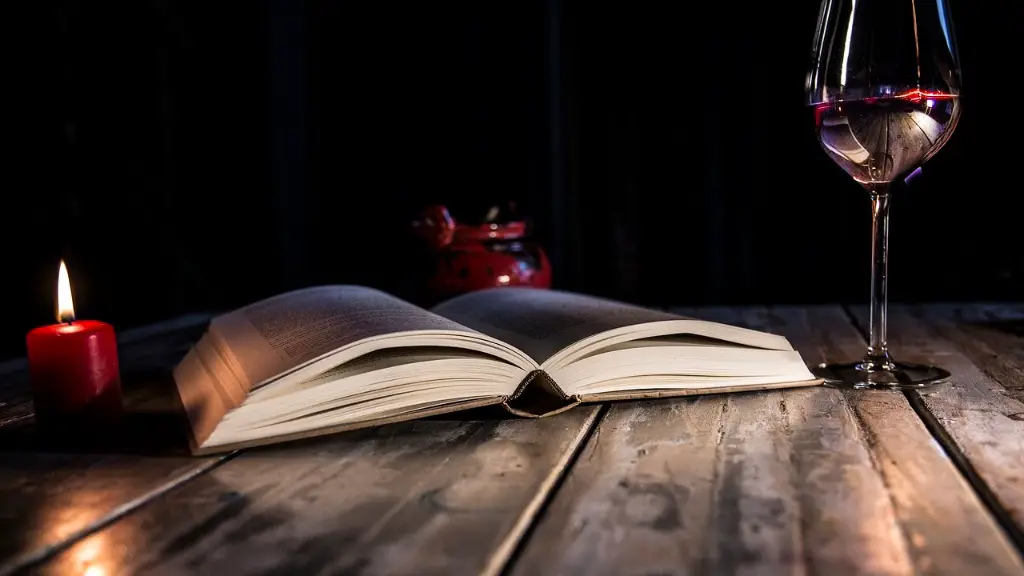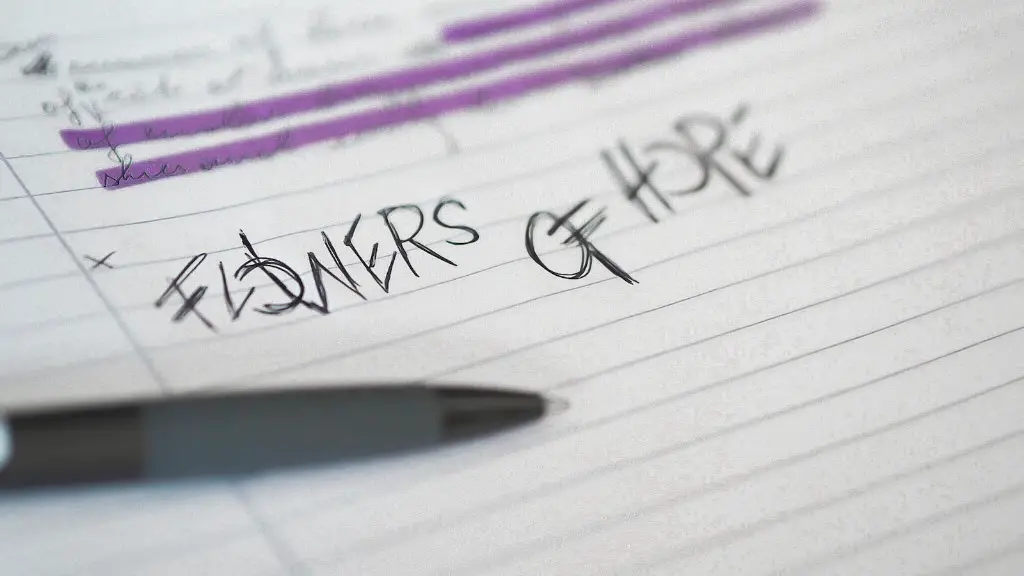A line of poetry is an arrangement of words that make up a single unit in a poem. It may be defined as a single poetic thought complete with its own unique rhythm, metre, and narrative structure. It is often composed of multiple images, ideas, and emotions that together construct a larger meaning. Lines of poetry vary in length and metre, from single word lines to longer stanzas, and from free-form to fixed metre. Lines of poetry often share a common theme, characters, or symbols, but can also stand alone as independent works.
The role of the line in poetry is often overlooked, as it is the simplest building block of a poem. However, the line has a powerful influence on the poem’s overall structure, content and form. A line of poetry can contain a complete thought or idea, and can be used to create an internal structure or rhythm. A poet can give emphasis to certain words, phrases or images by placing them on separate lines, thus providing structure and direction to the poem. Conversely, a poet can indicate a change in perspective or tone by breaking up a line.
There are many different types of lines in poetry, each with its own unique characteristics. For example, a line of prose is often longer than a line of verse, and has a more regular metre. Rhyme is also an important element of a line of poetry, as it creates interest and beauty. Rhyming lines often contain words or phrases which slip or overlap from one line to another, creating an interplay between meaning and form. Furthermore, the structure and content of a line of poetry are often used to create tension and emotion.
The effect of a line in a poem is often determined by the placement and combination of words. Therefore, one should pay particular attention to the way words are arranged. For example, words should be carefully chosen and arranged so as to emphasise particular meanings and feelings. Drawbacks, pauses, and alliterations are tools that can be used to draw attention to particular ideas or feelings in a line. Furthermore, poets often use imagery and symbols to evoke a particular mood or emotion.
Although there are no hard and fast rules for writing a line of poetry, it should be remembered that the words chosen and the way they are arranged should ultimately serve the poem’s overall message. A line of poetry should serve as the building block for a complete work of poetry, providing unity, structure and context. Therefore, it is essential for a poet to pay attention to the way words are arranged and the order in which they appear when composing a line of poetry.
Types of Lines of Poetry
There are several different types of lines of poetry, each with its own unique characteristics. Some of the most common types of lines of poetry include rhyme, metrical lines, rhythm, and assonance. Rhyme is a regular pattern of words or sounds that creates a pleasing effect when repeated. Metrical lines are composed of a specific number of syllables and a certain pattern of stresses. Rhythm is the use of beat or meter to create a flow in a poem. Last, but not least, assonance uses similar sounding words in a line to create a rhythm.
In addition to these common types of lines, there are also various sorts of fixed-form lines. For example, a haiku is a short fixed form poem consisting of three lines. The first line contains five syllables, the second line contains seven syllables, and the third line contains five syllables. Another popular fixed form is the sonnet, which typically consists of fourteen lines of iambic pentameter. In this form, the poet has a fixed-form structure within which to craft an argument, meaning, or story.
Each form of line has its own particular characteristics, and thus each leads to particular effects. As a poet, it is important to understand the power of each type of line in order to effectively convey a meaning or story. Knowing how and when to use such techniques is essential to the craft of writing.
Rhyme
Rhyme is a common form of line in poetry, and it is typically used to add beauty, emotion and depth to a poem. There are several different types of rhymes, such as internal rhyme, end rhyme, and perfect rhyme. Internal rhyme occurs when a word in the middle of a line rhymes with another word on the same line or in the same stanza. End rhyme occurs when the rhyming words are at the end of the line. Perfect rhyme occurs when the two rhyming words have identical vowel and consonant sounds preceding the rhyming syllable.
The use of rhyme can be used to create musicality and beauty in a poem, as well as help to convey emotions and ideas. For example, the poet can create a lyrical effect by using end rhyme. In addition, internal rhyme can be used to emphasize words or images in a poetic line. Furthermore, the combination of various rhymes can be used to create a diverse and intricate range of tones and effects.
Rhyme also serves another important purpose in poetry. By creating a structure of similar sounds, a poet can draw attention and emphasis to particular words or ideas in a line. For example, words and images at the end of a line can be brought to the fore to create a strong and engaging line.
Metrical Lines
Metrical lines are typically composed of a specific number of syllables and a certain pattern of stresses. A metrical line can be composed of either two syllables (dimeter) or three syllables (trimeter). In both forms, the metrical line is typically composed of a certain pattern of stresses, such as an anapest (two unstressed syllables followed by a stressed syllable) or a dactyl (a stressed syllable followed by two unstressed syllables).
Metrical lines are often used in traditional poetry to create a certain rhythm and shape. The use of these lines serves to create a certain flow in a poem. By structuring a poem in this way, the poet can create an interesting structure and draw attention to certain words or phrases. In this way, the poet can craft a poem with both form and content.
Metrical lines can also be used to create various shades of meaning or emotion. For example, for a slow and solemn mood, a dactyl form would be appropriate. On the other hand, for a quicker pace, an anapest form would be more suitable. By understanding the different effects possible with this form, a poet can craft a poem with multiple tones and shades of meaning.
Rhythm
Rhythm is the use of beat or meter to give a poem a certain flow. It is typically composed of alternating feet and stresses. The most common type of rhythm is iambic pentameter, in which a line consists of five feet, all of which are iambs (a meter consisting of an unstressed syllable followed by a stressed syllable). Other popular forms of rhythm are trochaic and anapestic, which are similar to iambic pentameter, but with two unstressed syllables followed by a stressed syllable, or a stressed syllable followed by two unstressed syllables, respectively.
Rhythm can often be used to suggest ideas or moods, as it can set a certain pace and tone. The use of rhythm can also help draw emphasis to particular words or sounds. For example, a poet can use the repetition of certain words or sounds to convey a particular idea or emotion. Furthermore, by creating a steady rhythm, a poet can create unity and structure throughout a poem.
Assonance
Assonance is the repetition of similar vowel sounds within a line or verse. This technique can be used to create rhythm and beauty in a poem, as well as to add emphasis to certain words or ideas. It can also be used to evoke different moods, feelings, and associations. For example, the use of sibilants such as ‘s’ and ‘sh’ can create a sense of mystery and suspense.
Although assonance is often used to evoke certain moods and feelings, it can also be used to create startling and unexpected images. By combining two similar sounding words, a poet can paint a vivid and surprising picture for the reader. This form of line also serves to draw attention to certain words or phrases, thus creating a structure and sense of unity in a poem.
Free-Form Lines
Free-form lines are lines that are not bound by traditional rules of metre and rhythm. This type of line is most often used in modern poetry and emphasizes creativity and freedom of expression. Free-form lines can be used to create unexpected and evocative images. The use of this form allows the poet to draw attention to certain ideas and express them in unexpected ways.
Unlike traditional forms of poetry, free-form lines often contain gaps, shifts in rhythm, and unexpected words or phrases. These disruptions can be used to create tension and emphasize certain words or images. In this way, free-form lines can be used to emphasize ideas or themes, add emphasis to certain images or words, and to create a variety of tones and moods.
Free-form lines are also often used to evoke a certain atmosphere or mood. By combining various images and associations, a poet can create a distinct feeling or emotion that adds to the overall effect of a poem. The use of this form allows a poet to be creative and to express an idea in a unique and compelling way.
Conclusion
The line is integral to a poem’s structure, content, and form. Lines of poetry can be composed of different types, such as rhyme, rhythm, and metrical lines, each with its own unique characteristics. The use of these techniques in combination can lead to interesting and complex effects. Furthermore, free-form lines can be used to create unique effects and evoke particular emotions. By understanding the power and potential of a poetic line, a poet can effectively craft a poem that conveys meaning and emotion.
